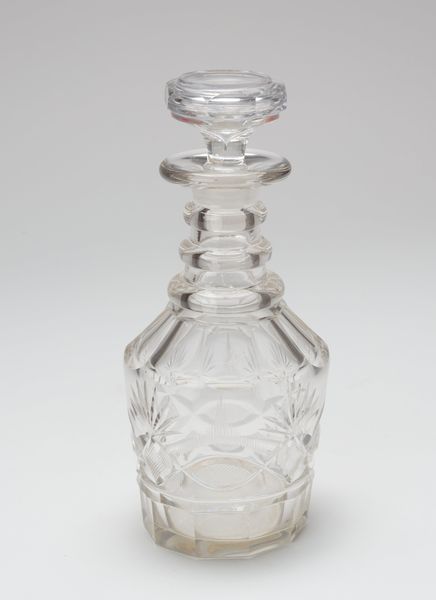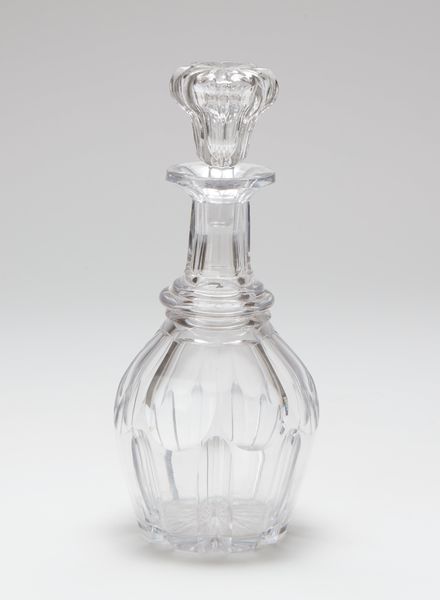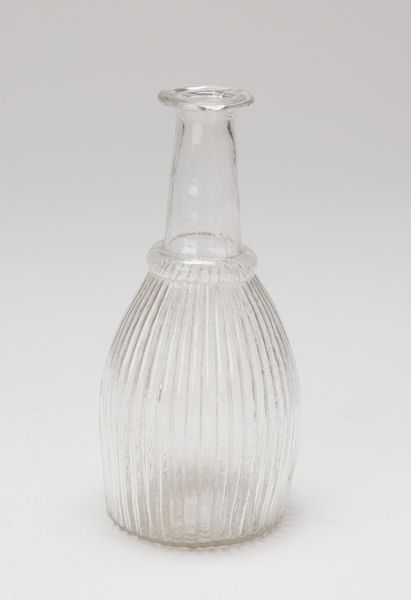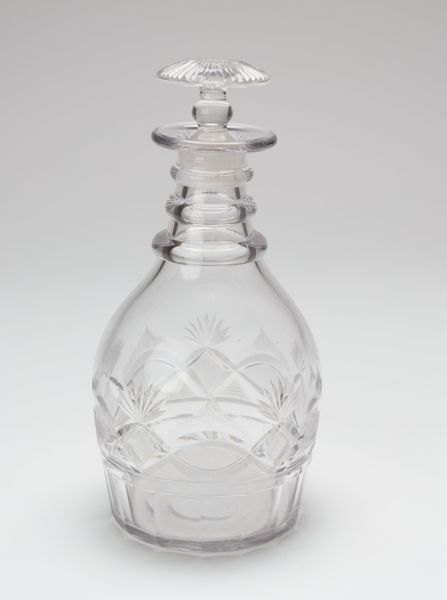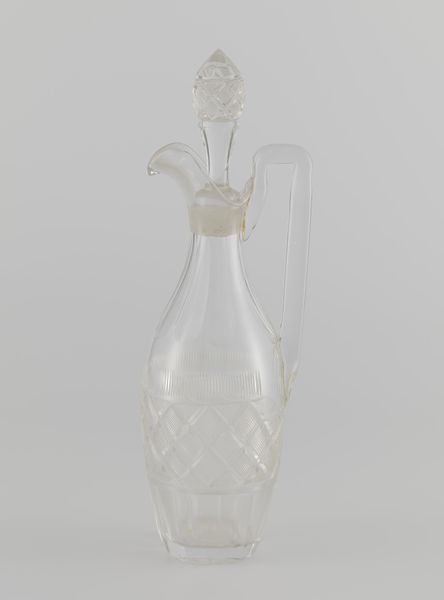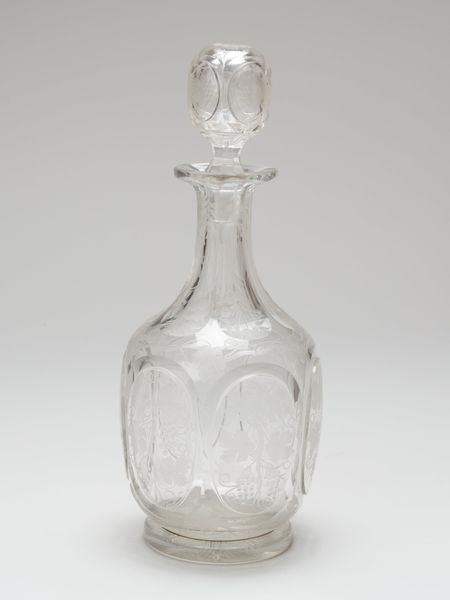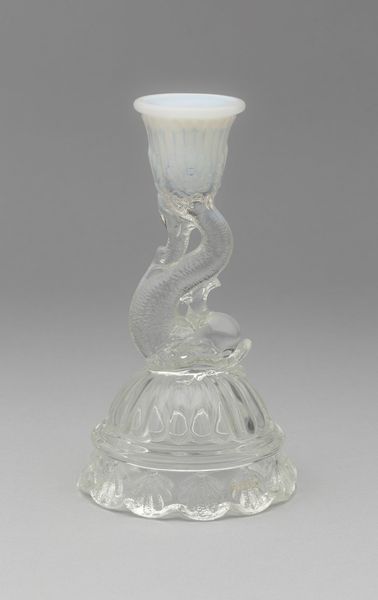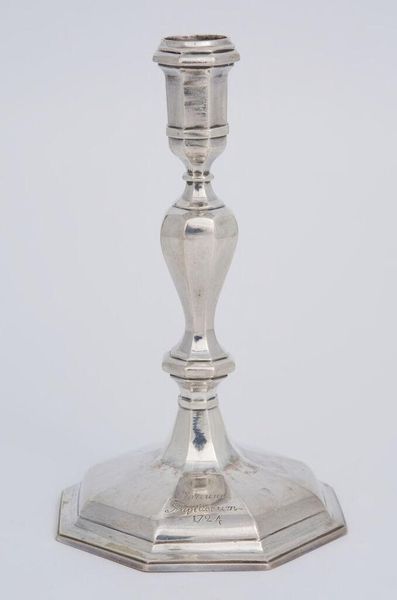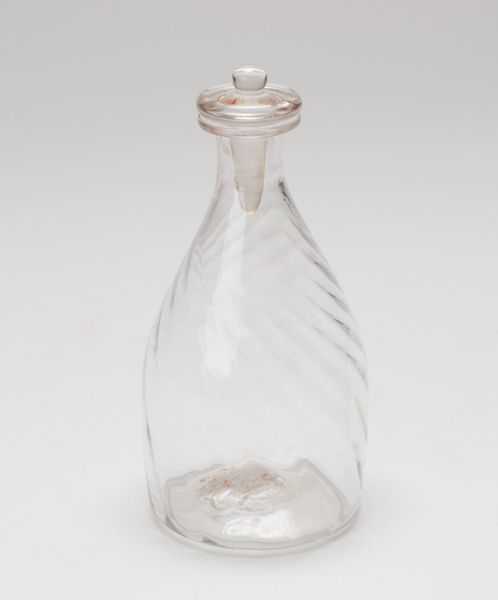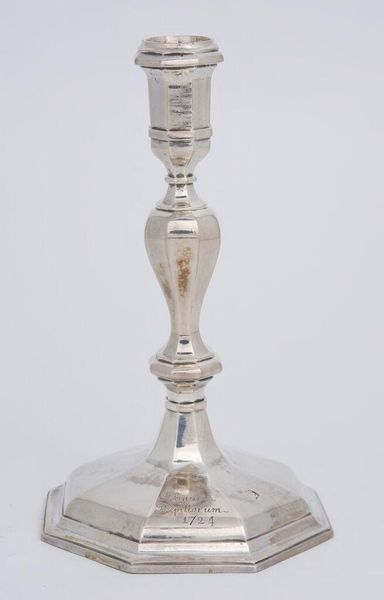
glass
#
glass
#
decorative-art
Dimensions: 8 3/8 x 3 x 3in. (21.3 x 7.6 x 7.6cm)
Copyright: Public Domain
Curator: What a charming little piece. We're looking at a glass decanter with stopper, dating back to the 18th or 19th century. It's currently held here at the Minneapolis Institute of Art. Editor: There's a certain fragility about it, a quiet elegance. I’m immediately drawn to how the light plays through the glass, creating these subtle, shifting patterns. Curator: Exactly! Considering its age, think about its place in society back then. Objects like this weren’t merely functional; they were statements about status and refinement. Storing perfume perhaps or a homemade remedy for ailments of wealthy family. Editor: So, beyond its obvious utility, this decanter also functioned as a silent participant in rituals of personal care and even perhaps quiet subversions within the domestic sphere. We should consider the labour involved; what did the life look like of the artisans who were producing objects of such intimate use? Curator: Precisely! And the politics of access—who got to own beautiful, even necessary objects such as this and who was excluded? The material itself is key: glassblowing was, and to some extent remains, an incredibly specialized craft. The rise of glass as material allowed certain sectors of society a way to maintain health or to adorn themselves in increasingly conspicuous and visible ways. Editor: Thinking about how its transparency invited—and perhaps even demanded—inspection. How did the cultural perception of clarity play into the desirability of an object like this, versus something opaque, secretive? Did it communicate hygiene, perhaps, or purity? What type of agency do we allow object's that survive from these time periods? Curator: That’s a wonderful question. The transparency can be linked to evolving ideals of the self at the time. The wealthy would likely possess these, and its creation reveals information on class structures of the era and how people in this category lived and perceived the world. Editor: Absolutely, and on the way we are able to understand the lives and beliefs of people from other historical contexts. The story contained within a seemingly simple vessel is actually brimming with information. Curator: A true testament to how even everyday objects can reveal complex social histories and speak volumes about human experiences. Editor: Indeed. I’ll never look at a decanter the same way again.
Comments
No comments
Be the first to comment and join the conversation on the ultimate creative platform.

